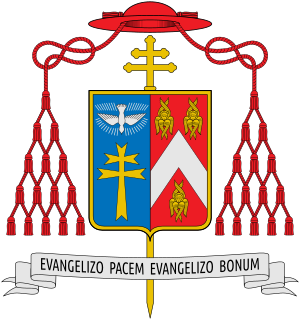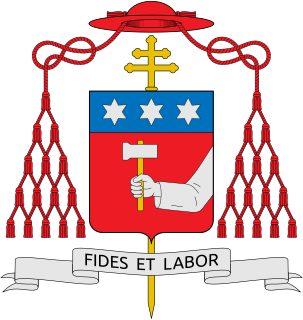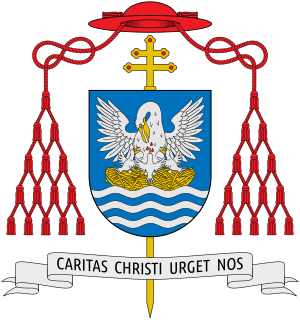
Vatican City, officially Vatican City State, is an independent city-state enclaved within Rome, Italy. Established with the Lateran Treaty (1929), it is distinct from yet under "full ownership, exclusive dominion, and sovereign authority and jurisdiction" of the Holy See. With an area of 44 hectares, and a population of about 1,000, it is the smallest state in the world by both area and population.

The politics of Vatican City take place in a framework of a theocratic absolute elective monarchy, in which the Pope, religiously speaking, the leader of the Roman Catholic Church and Bishop of Rome, exercises ex officio supreme legislative, executive, and judicial power over the Vatican City, a rare case of non-hereditary monarchy.

The Vatican City State is a neutral nation, which has not engaged in any war since its formation in 1929 by the Lateran Treaty. It has no formal military compact or agreement with neighbouring Italy, although responsibility for defending the Vatican City from an international aggressor is likely to lie primarily with the Italian Armed Forces. Although the Vatican City State has never been at war, its forces were exposed to military aggression when it was bombed during World War II, and whilst defending Vatican property in Rome during the same conflict.

The Sistine Chapel is a chapel in the Apostolic Palace, the official residence of the Pope, in Vatican City. Originally known as the Cappella Magna, the chapel takes its name from Pope Sixtus IV, who restored it between 1477 and 1480. Since that time, the chapel has served as a place of both religious and functionary papal activity. Today it is the site of the Papal conclave, the process by which a new pope is selected. The fame of the Sistine Chapel lies mainly in the frescos that decorate the interior, and most particularly the Sistine Chapel ceiling and The Last Judgment by Michelangelo.

Edmund Casimir Szoka was an American prelate of the Roman Catholic Church. He was President Emeritus of the Pontifical Commission for Vatican City State and President Emeritus of the Governatorate of Vatican City State, having previously served as Bishop of Gaylord from 1971 to 1981 and Archbishop of Detroit from 1981 to 1990. Szoka was elevated to the cardinalate in 1988.

Riccardo Galeazzi-Lisi was an Italian medical doctor who served as Pope Pius XII's personal physician from 1939 until his dismissal in 1958. During his service in the Vatican he was officially titled "Archiatra Pontificio". The pope also made him an honorary member of the Pontifical Academy of Sciences. He managed to be present at the 1958 death of Pius XII and created a scandal in this context with his attempt to publish pictures and stories about the dying pontiff. He was also a member of the International Society for the History of Medicine.

The Domus Sanctae Marthae is a building adjacent to St. Peter's Basilica in Vatican City. Completed in 1996, during the reign of Pope John Paul II, it is named after Saint Martha the hospitable, who was a sibling to Saints Mary and Lazarus of Bethany. The building functions as a guest house for clergy having business with the Holy See, and as the hotel residence of the members of the College of Cardinals when they are participating in a Papal Conclave to elect a new Pope.

Fiorenzo Angelini was an Italian Cardinal of the Roman Catholic Church. He is the former President of the Pontifical Council for the Pastoral Care of Health Care Workers in the Roman Curia, and was elevated to the cardinalate in 1991. When Cardinal Ersilio Tonini died on 28 July 2013, Cardinal Angelini became the oldest living cardinal until the next consistory where Pope Francis appointed 98-year-old Archbishop Loris Francesco Capovilla as a cardinal.

Julián Herranz Casado is a Spanish Cardinal of the Catholic Church. He served as president of the Pontifical Council for the Interpretation of Legislative Texts in the Roman Curia from 1994 to 2007, and was elevated to the cardinalate in 2003.

Luigi Maglione was an Italian Cardinal of the Roman Catholic Church. He was elevated to the cardinalate in 1935 and served as the Vatican Secretary of State under Pope Pius XII from 1939 until his death. Pius XII never replaced Maglione, opting to assume the responsibilities of the office himself, with the assistance of two undersecretaries.

René Victor Auberjonois was a Swiss post-impressionist painter and one of the leading Swiss artists of the 20th century.

Leonardo Sandri is an Argentine Cardinal of the Catholic Church. He has been the Prefect of the Congregation for the Oriental Churches since June 2007 and a cardinal since November of that year. He served in the diplomatic service of the Holy See from 1974 to 1991, in several overseas assignments including as permanent observer of the Holy See before the Organization of American States from 1989 to 1991, and in Rome as Substitute for General Affairs in the Secretariat of State from 1977 to 1989.
The Gendarmerie Corps of Vatican City State is the gendarmerie, or police and security force, of Vatican City and the extraterritorial properties of the Holy See.

Paolo Romeo STL JCD is a Cardinal and Archbishop emeritus of Palermo. He was appointed to the see of Palermo by Pope Benedict XVI on 19 December 2006.

Giuseppe Pecci was a Jesuit Thomist theologian whose younger brother, Vincenzo, became Pope Leo XIII and appointed him a cardinal. The Neo-Thomist revival, which Leo XIII and his brother Giuseppe, Cardinal Pecci originated in 1879, remained the leading papal philosophy until Vatican II.

Ermenegildo Florit was an Italian Cardinal of the Roman Catholic Church. He served as Archbishop of Florence from 1962 to 1977, and was elevated to the cardinalate in 1965.

Stanisław Ryłko is a Polish Cardinal of the Roman Catholic Church. He held positions in the Roman Curia beginning in 1987 and was president of the Pontifical Council for the Laity from 2003 to 2016. He was made a cardinal in 2007. He has been Archpriest of the Basilica of Santa Maria Maggiore since 28 December 2016.

Karl-Josef Rauber is a cardinal of the Catholic Church, who served as a papal nuncio from 1982 until his retirement in 2009.
Schiess is a surname. Notable people with the surname include:






















